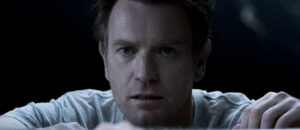'Born in China'
Movie Rating:
2.5
It’s hard to even know what to say about DisneyNature documentaries anymore. They have a formula: Send brilliant nature documentarians out into the field to gather extraordinary footage, then cut it down to the cutest beauty shots of critters and toss on a celebrity narration to give them a bit of anthropomorphized personality. It works, but it isn’t particularly interesting anymore.
This whole DisneyNature thing started with ‘Earth’, a streamlined version of the BBC’s ‘Planet Earth’ miniseries. Since that was one of the great documentary achievements of the 21st Century but had never screened theatrically, it was a worthy simplified alternative for families who didn’t want to coast through the full Blu-ray box set. Because it made more money than expected (over $100 million worldwide), now a cutesy DisneyNature doc is an annual tradition. That’s great news for the filmmakers who specialize in this sort of thing. The money must be better than normal and their work gets to screen theatrically in wide release. Unfortunately, the movies have long since gotten predictable. It’s a bit of a “fill in the blanks” formula that offers very little of the depth and insight that the subjects deserve. Essentially, a particularly cute animal and celebrity are chosen, then the rest kind of takes care of itself.
‘Born in China’ is the latest DisneyNature production and it’s mostly about pandas. Cuddly, cuddly pandas. It was also made in part for the Chinese marketplace like so many contemporary Hollywood products these days (and it brought in a healthy $10 million when it was released there last year, so mission accomplished). Now we get it on this side of the ocean and you can already guess everything that you’ll see by the time the opening credits appear. Narrated by John Krasinski (the celeb voiceover thing is running into shallow waters), ‘Born in China’ divides its structure into seasons to show how those shifts in climate affect a few different animals native to the country.
The film stars various pandas, snow leopards, monkeys and chiru (along with a couple other furry cameos). Interior lives are imposed through Krasinski’s narration, which unfolds with the gentle hum of a self-help tape designed to lull viewers to sleep. (Based on the excitement level audible in the comedic actor’s voice, there’s a chance he passed out at some point during the recording process as well.) All the basics of cutesy nature docs are covered. We see the various fuzzballs care for their young, scavenge/hunt for food, and fight off a few pesky predators. Facts are parsed out slowly and presented with the simplicity of a gas station ‘National Geographic’ trading card. There’s a general welcome feeling of animal awareness/preservation and some faux profundity discussing the circle of life (although sadly without that bitchin’ Elton John song to nail it home). It’s perfectly nice, perfectly pleasant, and perfectly dull.
More often than not, the sense of manipulation in the editing and narration is obvious and heavy-handed, forcing narratives, characters and emotional weight onto animal footage that was probably shot months apart. These DisneyNature docs go out of their way to force human characteristics and patterns onto animal behavior for the sake of appealing to the smallest of children in the audience. There’s nothing particularly wrong with that, and several previous films in this series have even done it rather well. However, it’s getting a little tired, a little forced, and comes off as more than a little pandering.
While the beautiful footage that the filmmakers managed to capture is a wonder to behold on a big screen, it’s a shame that the DisneyNature movies are the only nature documentaries to get much of a theatrical release anymore. There’s so much better work that should be seen this way and even better ways to edit and present this exact footage. Alas, these things are what we’re stuck with. ‘Born in China’ might not be the worst DisneyNature feature to date, but it feels particularly formulaic since the formula has run its course. The best part of the movie comes during the credits when we see what an incredible physical and technical ordeal it was for the filmmakers to capture the footage that would go on to be dumbed-down so thoroughly. Hopefully, the next time one of these movies hits theater screens, the final form will be worthier of the effort it took to get to this docu-schmaltz.



